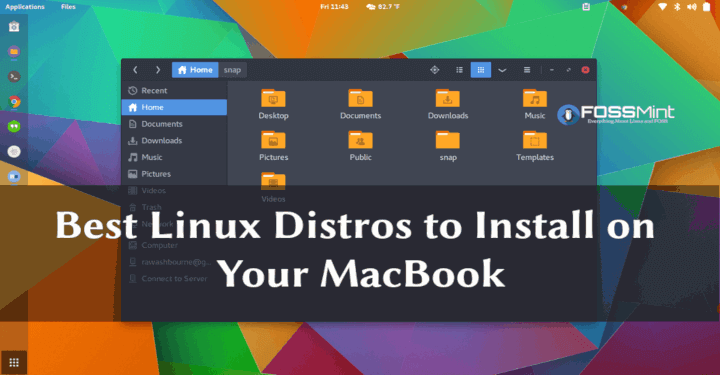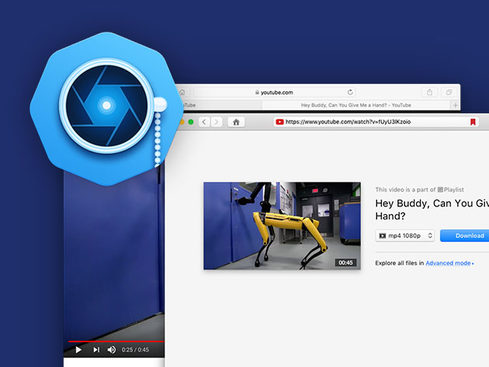The problem with “Guru”, change the OS X El Capitan to MAC OS X in the general tap - type of SO. Faiz Orz November 3, 2016 at 8:09 AM Reply. Are you sure that it work? Jim January 15, 2017 at 10:27 PM Reply. This worked for me. Mukhtar Jafari Post author January 16, 2017 at 8:20 PM. You’re welcome dear Jim Good Luck. How to download the MAC OS X EL Capitan ISO– As we all know that Mac OS of Apple is the premium Operating System having the most optimum technology.I always prefer Mac over windows just because of its fast and smooth performance. It an undeniable fact that Apple has always produced Software’s with faster performance and is lighter built than windows and androids. This feature was added in Mac OS X 10.11 El Capitan, which added quite a few great new features. One of these new features, which hasn’t gotten a lot of coverage is the ability to hide and show the menu bar, a mainstay not just in OS X, but Macs in general dating back to the earliest versions of the Mac System. OS X El Capitan (version 10.11) is the twelfth major release of OS X (now named macOS), Apple Inc.’s desktop and server operating system for Macintosh computers. It is the successor to OS X Yosemite and focuses mainly on performance, stability, and security.
Bored of running Chrome OS on your Acer C720 Chromebook? Want to turn it into a ‘hackintosh’ Mac Laptop?

Well, now you can.

CoolstarOrg, a genius at getting other OSes up and running on Chrome OS hardware, has written a detailed guide on how owners of the Acer C720 can install Mac OS X 10.11 ‘El Capitan’ on their Chromebook.
A timely “hackintosh” report, all told. It was just over a year ago that we reported on CoolStar’s effort to get OS X 10.9 Mavericks up and running on an the exact same Chromebook.
How To Download El Capitan Os X
Sure, there are caveats and practicality issues, but it’s a great case of “…because why not?”. Chromebooks are basic Intel-based PCs: they can run Linux, they can run Windows, so it’s no surprise that they can also run Mac OS X.
El Capitanbook
You will need an Acer C720 with an Intel Core i3-4005U and 4 GB RAM to follow along, as this chipset is the one most compatible with OS X (requiring only a few minor tweaks).
You’ll also need a a user-upgraded 64 GB (or higher) SSD and a legit copy of Mac OS X 10.11 El Capitan ready to boot from a USB.
Don’t expect miracles once you’ve jumped through the required hoops, either. Trackpad scrolling is described as “poor and choppy”, and hackintoshers report patchy Wi-Fi issues.
Check out Coolstar’s full guide over on Reddit, and bookmark this page of his website for further details.
[Guide] Install OS X 10.11.5 El Capitan on Acer C720 Chromebook from chrultrabook

These advanced steps are primarily for system administrators and others who are familiar with the command line. You don't need a bootable installer to upgrade macOS or reinstall macOS, but it can be useful when you want to install on multiple computers without downloading the installer each time.
What you need to create a bootable installer
- A USB flash drive or other secondary volume, formatted as Mac OS Extended, with at least 12GB of available storage
- A downloaded installer for macOS Big Sur, Catalina, Mojave, High Sierra, or El Capitan
Download macOS

- Download: macOS Big Sur, macOS Catalina, macOS Mojave, or macOS High Sierra
These download to your Applications folder as an app named Install macOS [version name]. If the installer opens after downloading, quit it without continuing installation. To get the correct installer, download from a Mac that is using macOS Sierra 10.12.5 or later, or El Capitan 10.11.6. Enterprise administrators, please download from Apple, not a locally hosted software-update server. - Download: OS X El Capitan
This downloads as a disk image named InstallMacOSX.dmg. On a Mac that is compatible with El Capitan, open the disk image and run the installer within, named InstallMacOSX.pkg. It installs an app named Install OS X El Capitan into your Applications folder. You will create the bootable installer from this app, not from the disk image or .pkg installer.
Use the 'createinstallmedia' command in Terminal
- Connect the USB flash drive or other volume that you're using for the bootable installer.
- Open Terminal, which is in the Utilities folder of your Applications folder.
- Type or paste one of the following commands in Terminal. These assume that the installer is in your Applications folder, and MyVolume is the name of the USB flash drive or other volume you're using. If it has a different name, replace
MyVolumein these commands with the name of your volume.
Big Sur:*
Catalina:*
Mojave:*
High Sierra:*
El Capitan:
* If your Mac is using macOS Sierra or earlier, include the --applicationpath argument and installer path, similar to the way this is done in the command for El Capitan.
After typing the command:
- Press Return to enter the command.
- When prompted, type your administrator password and press Return again. Terminal doesn't show any characters as you type your password.
- When prompted, type
Yto confirm that you want to erase the volume, then press Return. Terminal shows the progress as the volume is erased. - After the volume is erased, you may see an alert that Terminal would like to access files on a removable volume. Click OK to allow the copy to proceed.
- When Terminal says that it's done, the volume will have the same name as the installer you downloaded, such as Install macOS Big Sur. You can now quit Terminal and eject the volume.
Use the bootable installer
Determine whether you're using a Mac with Apple silicon, then follow the appropriate steps:
Apple silicon
- Plug the bootable installer into a Mac that is connected to the internet and compatible with the version of macOS you're installing.
- Turn on your Mac and continue to hold the power button until you see the startup options window, which shows your bootable volumes and a gear icon labled Options.
- Select the volume containing the bootable installer, then click Continue.
- When the macOS installer opens, follow the onscreen instructions.
Intel processor
Mac Os X El Capitan Virtualbox Image
- Plug the bootable installer into a Mac that is connected to the internet and compatible with the version of macOS you're installing.
- Press and hold the Option (Alt) ⌥ key immediately after turning on or restarting your Mac.
- Release the Option key when you see a dark screen showing your bootable volumes.
- Select the volume containing the bootable installer. Then click the up arrow or press Return.
If you can't start up from the bootable installer, make sure that the External Boot setting in Startup Security Utility is set to allow booting from external media. - Choose your language, if prompted.
- Select Install macOS (or Install OS X) from the Utilities window, then click Continue and follow the onscreen instructions.
Learn more
For more information about the createinstallmedia command and the arguments that you can use with it, make sure that the macOS installer is in your Applications folder, then enter the appropriate path in Terminal:
- Big Sur: /Applications/Install macOS Big Sur.app/Contents/Resources/createinstallmedia
- Catalina: /Applications/Install macOS Catalina.app/Contents/Resources/createinstallmedia
- Mojave: /Applications/Install macOS Mojave.app/Contents/Resources/createinstallmedia
- High Sierra: /Applications/Install macOS High Sierra.app/Contents/Resources/createinstallmedia
- El Capitan: /Applications/Install OS X El Capitan.app/Contents/Resources/createinstallmedia
Apple Os X El Capitan
A bootable installer doesn't download macOS from the internet, but it does require an internet connection to get firmware and other information specific to the Mac model.

